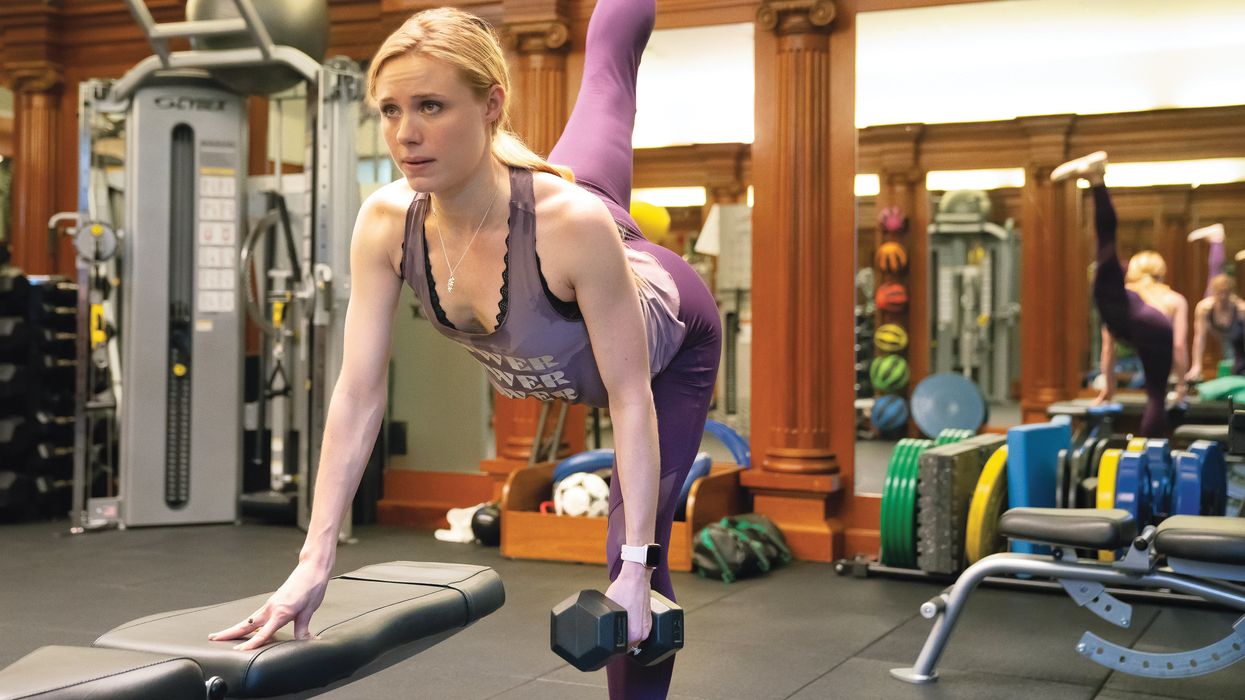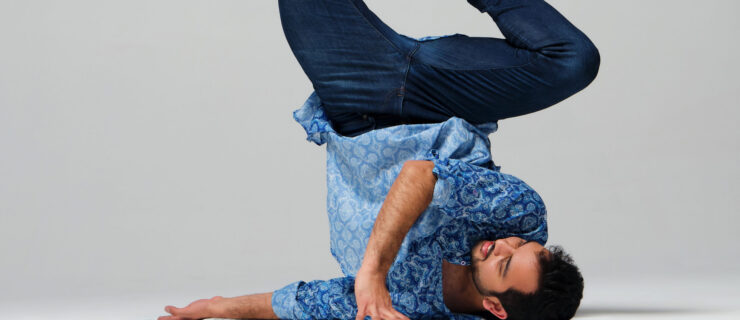Dancers Today Are Taking Cross-Training to Extremes. But What's the Artistic Benefit?
New York City Ballet principal Sara Mearns wasn’t sure she was strong enough. A ballerina who has danced many demanding full-length and contemporary roles, she was about to push herself physically more than she thought was possible.
“I said, ‘I can’t. My body won’t,’ ” she says. “He told me, ‘Yes, it will.’ ”
She wasn’t working with a ballet coach, but with personal trainer Joel Prouty, who was asking her to do squats with a heavier barbell than she’d ever used.
Mearns was stunned when she completed the set.
“I was so exhausted, so emotional, I couldn’t believe I’d done it,” she says. Prouty snapped a photo of her after she finished the exercise, and she keeps it in her dressing room to remind her of what she’s capable of. “Working that hard is very mental. Once you tap into that, you’re mentally stronger onstage,” says Mearns.
Mearns is one of a growing number of dancers who are integrating aggressive cross-training into their routine, such as high-intensity cardio, boot camp, weights and more. It’s not uncommon to see dancers post extreme exercises on Instagram or for them to work out every single day. For some dancers, it’s a great way to reduce injuries and increase strength, which helps them feel freer onstage to open up artistically. But whether vigorous cross-training is right for every dancer—physically and artistically—is a complicated question.
As dance companies’ repertories have become more varied, many dancers have increased the intensity of their workouts to handle the range of choreography.
“When I first got into the company, cross-training wasn’t so common,” says Matthew Rushing, who has been performing with Alvin Ailey American Dance Theater since 1992 and will become associate artistic director in January. “Modern dancers only did modern and ballet only ballet. Now, you have to do it all, and demands on the body have heightened.”

Andrew Eccles, Courtesy Ailey
For the last 10 years, Rushing has cross-trained with a mix of personal training and Gyrokinesis, and says it’s helped keep injuries at bay and his stamina up.
But he says the deeper benefits are learning to integrate the concepts of the workouts into his dancing. For instance, Gyrokinesis teaches him when to pull back and use his “supple power.”
“I tend to overwork my body,” he says. “I’ve had to learn to balance power and vulnerability.”
Joffrey Ballet dancer Derrick Agnoletti goes to Barry’s Bootcamp six days a week before company class and does yoga on his day off from Barry’s. At 37, he says the workouts have not only made him stronger than ever, but have given him better body awareness.
“When I was younger I wouldn’t think about which muscles I was using. I would just push,” he says. “Through Barry’s, I’ve learned how to fire specific muscles, like my glutes and hamstrings instead of my quads.”

Matt de la Peña, Courtesy Agnoletti
Dancers who benefit the most from cross-training are those who approach it as a learning experience, not just a physical one, says American Ballet Theatre ballet master Clinton Luckett. Simply showing up for a workout doesn’t guarantee results in the dance studio.
“Dancers have to be able to integrate what they learn and apply it to dance,” Luckett says. “That’s the leap not everyone is able to make—I don’t always see a visible change in how they work. It comes down to intelligence, how smart they are about their body.”
Jumping right into intense exercises can be risky. Kathleen Davenport, company physician at Miami City Ballet, cautions that dancers need to be guided into a program appropriate for them, or cross-training could lead to injury.
“A regimen that is started without guidance from a dance medicine expert could theoretically result in more harm than good,” she says. For example, if a dancer who is already flexible practices yoga incorrectly, they risk injury from overstretching and becoming weak. That doesn’t mean they shouldn’t do yoga or that it can’t help build strength, but they might need to adjust their approach. “We’d discuss a personalized way to participate with a focus on strength and control rather than ‘sitting’ into the end range of poses without their muscles being fully engaged,” says Davenport.
Luckett believes ballet’s current aesthetic has made many dancers overly focused on hypermobility. He feels they place too much emphasis on stretching to the extreme, which makes them weak.
“We have all the physios and Pilates and training for the dancers, and yet the injury rate is higher than ever,” he says. “In my view, it’s because of the obsession with flexibility.”
He also thinks the focus on working out is taking away from dancers building strength through ballet class, which he says builds a different kind of strength than any other form of exercise.
Mearns, for one, does her own daily warm-up that she tailors to that day’s rehearsal or performance needs—a mix of strength-training, stretching, Cunningham and a personalized ballet class. For her, the combination of cross-training and adapting her class to the daily demands on her body has drastically reduced her injuries.

Kyle Froman
Generally, when done correctly, cross-training can be helpful for dancers physically and artistically, Davenport says. “The medical and scientific literature has shown that cross-training can improve some aspects of artistry, though this can be difficult to quantify scientifically,” she says. “For example, if you do aerobic exercises, then dancers will have more stamina for the end of a long and/or taxing variation, which can not only have benefits in terms of injury prevention but also for artistry.”
But while cross-training can help, Rushing and Luckett both say that coaching is what really fosters artistic growth.
“The repertory requires both physical strength and emotional intimacy,” says Rushing. “You have to take the time in the studio to investigate when to let go of this muscle group to engage this one, to use weight in this way, in order to find that balance.”
Luckett says that younger dancers often focus on power and virtuosity, and need to be coached to value the more intimate moments in the choreography.
“The ballet staff has to counterbalance the dancer,” he says. “If they’re strong artistically but not physically, we might tell them to cross-train. But if they’re strong physically, they might need more time in the studio working through the artistic side.”
Mearns, who is known for the passion and drama she brings to her dancing, says that her cross-training has enhanced her artistic abilities. The physical and mental strength she’s gained allow her to focus on the artistry of her performances, worrying less about stamina and the technical elements.
“Artistically, you have to invest yourself in whatever you’re doing. You can’t fake it or do it halfway,” she says.
Agnoletti, who has danced both classical and contemporary roles, says that the better understanding of his body and greater stamina he’s developed through cross-training helps him be more present onstage because he trusts his body.
“My legs have more stability now, so my upper body can be free,” he says. “I have a better awareness of the person I’m dancing with, rather than ‘I have to get through this.’ ”




